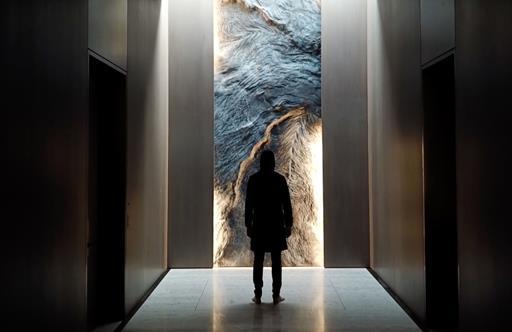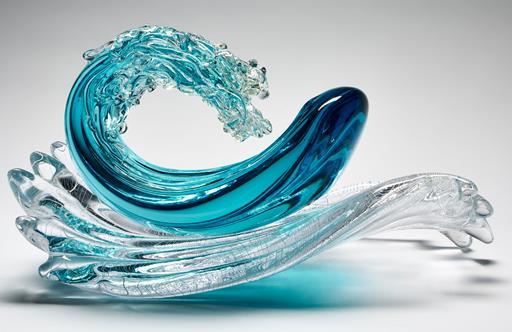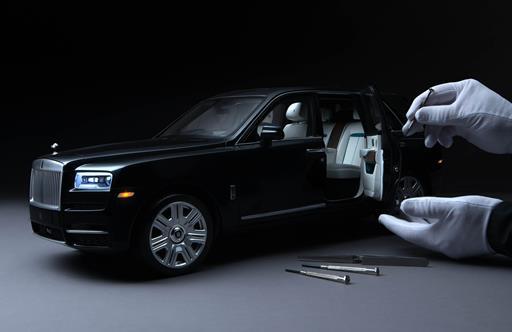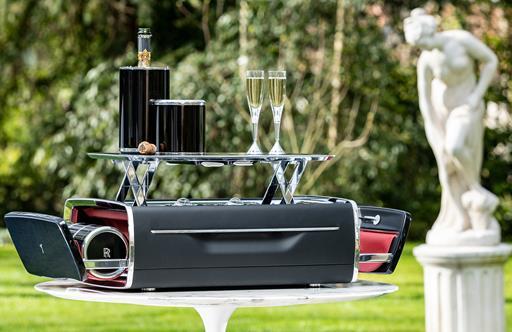Full Sail Ahead
With construction of the world’s largest wind-powered yacht under way, Orient Express is charting new waters, adding ocean-going trips to its existing portfolio of trains and forthcoming hotels, and closing the loop between luxury and more sustainable modes of travel
If the journey is the destination, then landscapes, says architect Maxime d’Angeac, could be a kind of keepsake. For the fortunate few aboard Orient Express Corinthian when she launches in summer 2026, it’s not just the opulent design that promises to make a lasting impression – it’s the sweeping seascapes, too.
Set to be the world’s largest sailing yacht, Orient Express Corinthian heralds a new era of nautical design and engineering: 220 metres long, with eight decks, three 100m-high masts, 4,500 square metres of sails, and 54 suites in which the smallest windows measure a mighty four metres wide. For d’Angeac, who, as Orient Express’s artistic director, is leading the design, the panoramic windows are key, creating “a kind of CinemaScope, a way to participate between the outside and inside”.
A jewel in the crown of Orient Express’s expansion across three key verticals – trains, hotels and ships – Orient Express Corinthian somehow evokes both the golden age of travel and the idea of a spaceship, a sleek amalgam of the brand’s sepia-tinted heritage and high-tech futurism. The first of two French-flagged sister vessels, she represents the coming to fruition of an idea originally conceived of in 2016 by Sébastien Bazin – a passionate sailor and CEO of Accor, operator of Orient Express (in partnership with LVMH) – and his old school friend and shipping-industry veteran Philippe Hetland Brault, now president of Orient Express Silenseas. Maxime d'Agneac (photo: Franck Juery)
Maxime d'Agneac (photo: Franck Juery)
Currently being built by Saint-Nazaire shipyard Chantiers de l’Atlantique, Orient Express Corinthian will offer passengers the experience of a yacht coupled with the absolute luxury of an iconic oceangoing liner like the Île de France. A hybrid vessel powered by wind – the aim is for every voyage to be made under sail – and LNG (liquefied natural gas), she’ll also be one of the greenest afloat.
It starts with those sails: 1,500 square metres apiece and made from carbon-fibre reinforced glass panels using Chantiers de l’Atlantique’s patented technology. Each can be remotely hoisted and lowered from the bridge, rotate 360 degrees – a safety feature to handle unexpected weather – and run up and down a mast that, as needed, can be tilted up to 70 degrees, allowing the yacht to slip under the bridges of major harbours around the world.
In silhouette, the striking rig design makes it seem as if Orient Express Corinthian is carrying three America’s Cup yachts on her back. “Experts in luxury hospitality and business often raise the question of whether the sails are just for the look,” says Hetland Brault. “Our reply is, ‘No’. They have a definite impact on our consumption, on our green technology and protection of the seas.”
 (© Orient Express, photo: Alixe Lay)
(© Orient Express, photo: Alixe Lay)
More than that, states Orient Express Sailing Yachts COO Vianney Vautier, “If Orient Express Corinthian weren’t a sailing yacht, it would never have existed.” A former naval architect at Chantiers de l’Atlantique, Vautier was brought in to develop the sail technology. “It was a commitment from Accor and Orient Express to develop sustainable technology, sustainable assets,” he adds. “So if it were just another fuel-burning vessel, then that commitment would have been broken.”
The sailing experience will be integral to how Orient Express Corinthian operates. “We don’t intend to reinvent the sexy places – everybody likes Saint-Tropez, Venice and Positano – it’s the way we handle our calls that will change,” says Hetland-Brault. “We will have a different pace. In many cases, we’ll stay two nights … and I expect we will be [spending] over 60 per cent of time at anchor, not in port.” When in those classic ports of call, however, guests can expect next-level experiences not usually available to the public: think private dinners on the rooftop of the Venice Guggenheim or in the ancient amphitheatre at Taormina, ad hoc helicopter rides or scuba-diving excursions.
Other sustainability highlights aboard Orient Express Corinthian include her aforementioned LNG engine, which has been developed to reduce methane slip – in which unburned molecules leach into the atmosphere; a floating-object detector, to avoid wildlife collisions; computer-controlled dynamic positioning, reducing the need to drop anchor for short stops, thereby protecting the seabed; and cold ironing in port, where the vessel can connect to external power and reduce emissions. But, aside from the sails, perhaps the most striking technological feat will be Orient Express Corinthian’s ability to sail flat, thanks to an underwater stabiliser that balances the sail forces and ensures none of the usual heeling over of a yacht. (Photo: Bernard Biger)
(Photo: Bernard Biger)
If passengers don’t notice that their champagne isn’t slopping out of its glass, they’re unlikely to miss the visual impact of the yacht’s interior, every centimetre of which is bespoke – the result of close collaboration between the design team and the shipyard. “It’s not a design after industry; it’s industry and design together,” says d’Angeac. “She needs to be fit for transatlantic crossings.” Included in the layout is a 46.5sq m spa, dining overseen by Michelin-starred chef Yannick Alléno, a library of 1,500 books, a cinema and – a fun touch – a state-of-the-art sound-recording studio stocked with musical instruments.
Guests will never, however, be far from the sea. “We are really close to the water, the wind and the light,” says d’Angeac. “We’re not in a building 50 metres high.” Decks 4 through 6 will house the sailing yacht’s suites, ranging from 47 to 142 square metres, while Deck 7 has been given over to six Penthouse Suites of between 102 and 405 square metres. The design inspiration includes Art Deco and Mediterranean influences but, to harmonise the innovation with the classic Orient Express aesthetic, d’Angeac says, “we work with heritage but without any baggage or nostalgia”.
As d’Angeac indicates, Orient Express Corinthian will start with Mediterranean-only itineraries but will ultimately be spending summers in Europe and winters in the Caribbean, with journeys to Northern Europe and the Arabian Peninsula to follow.
“I think in the end,” d’Angeac muses, “a trip on Orient Express Corinthian will be a kind of global souvenir.”
Orient Express Corinthian is due to launch in June 2026. Bookings are now open
 (© Orient Express)
(© Orient Express)





















